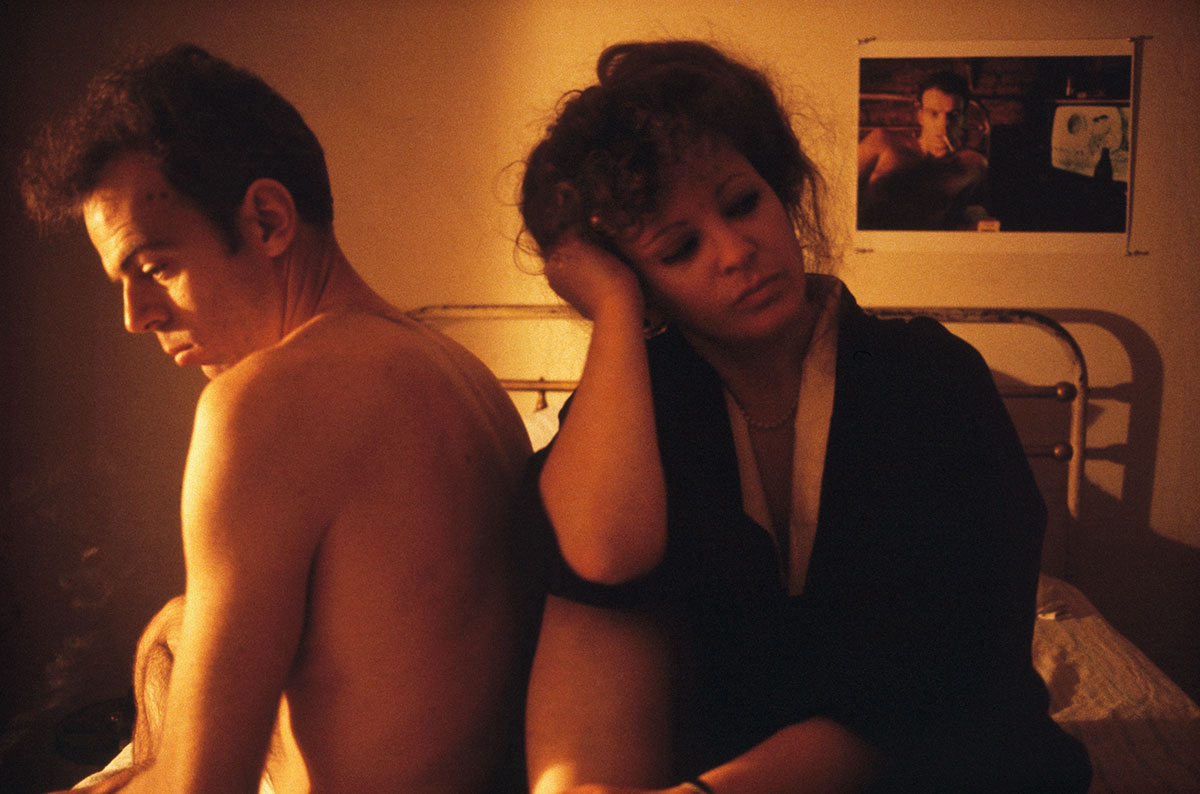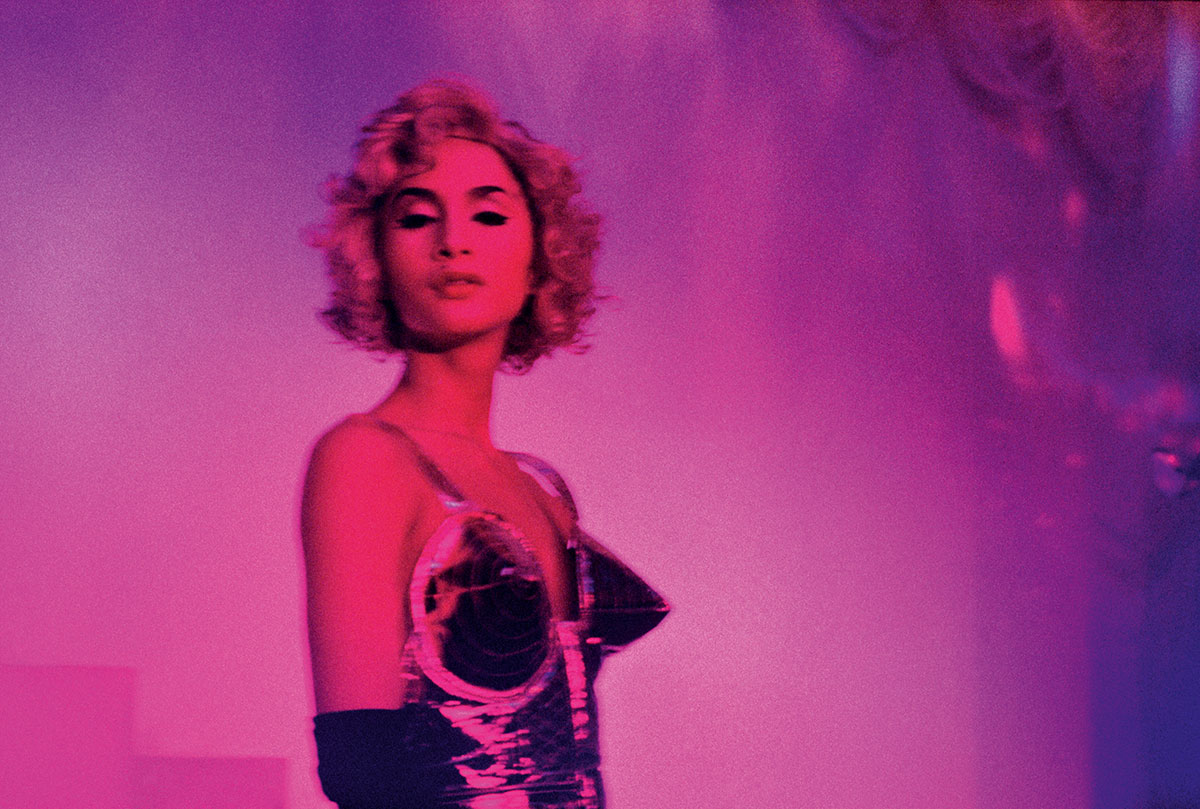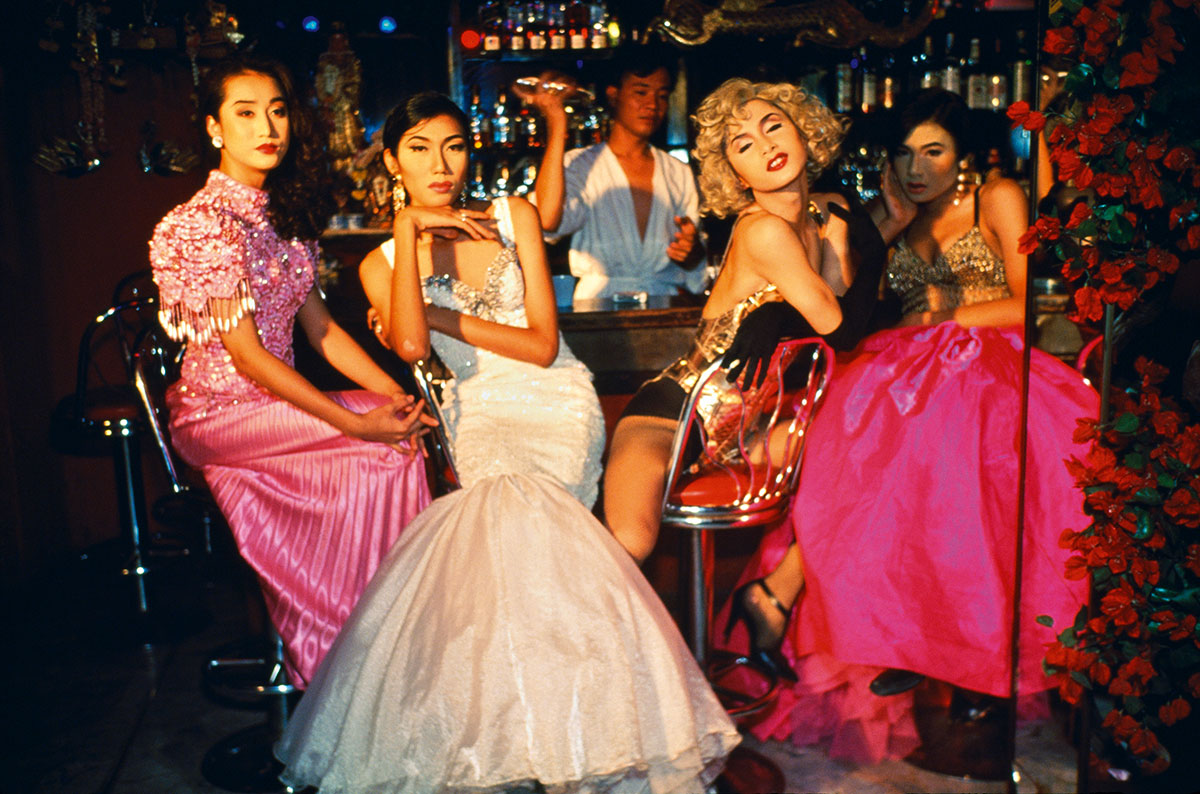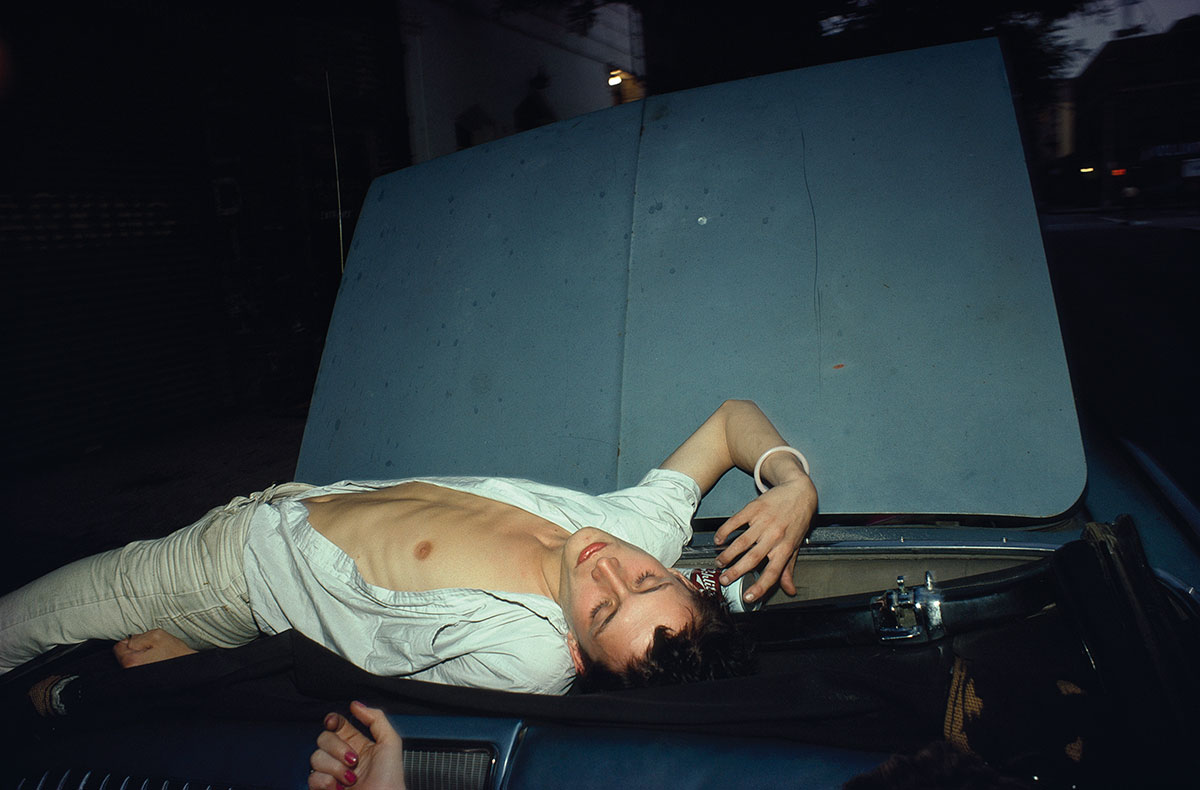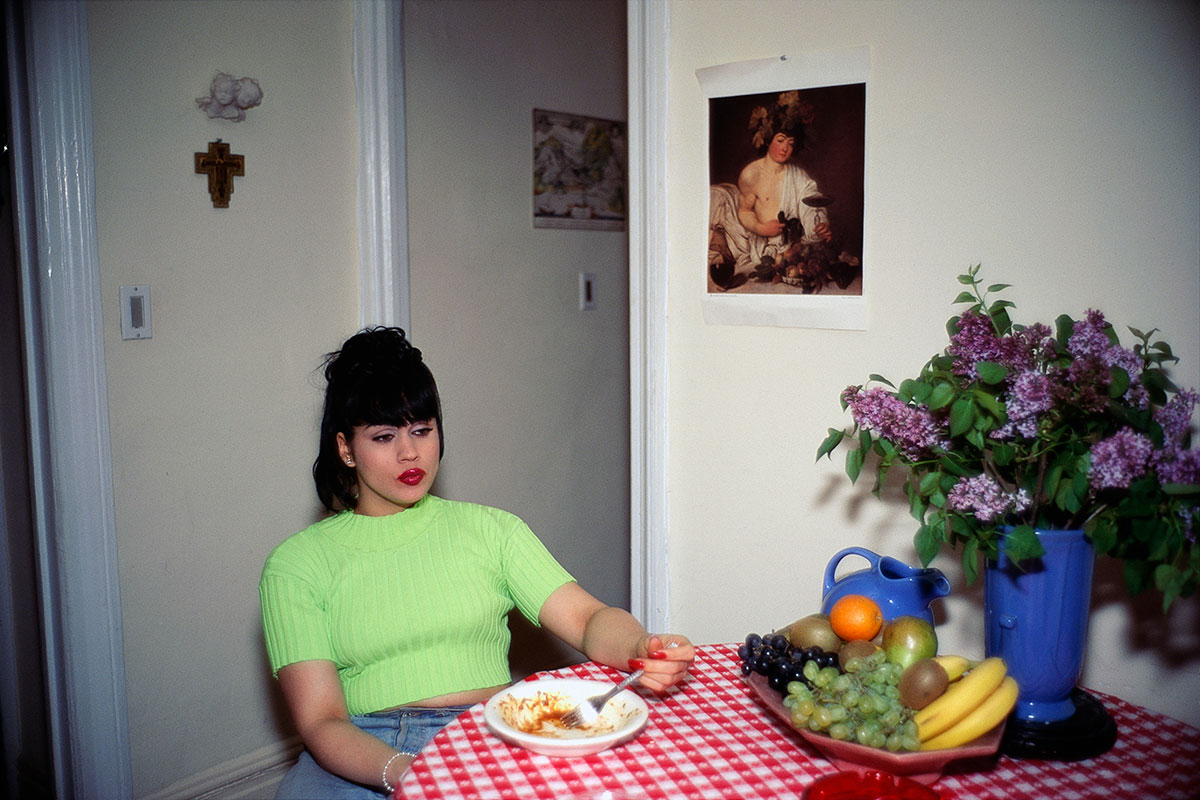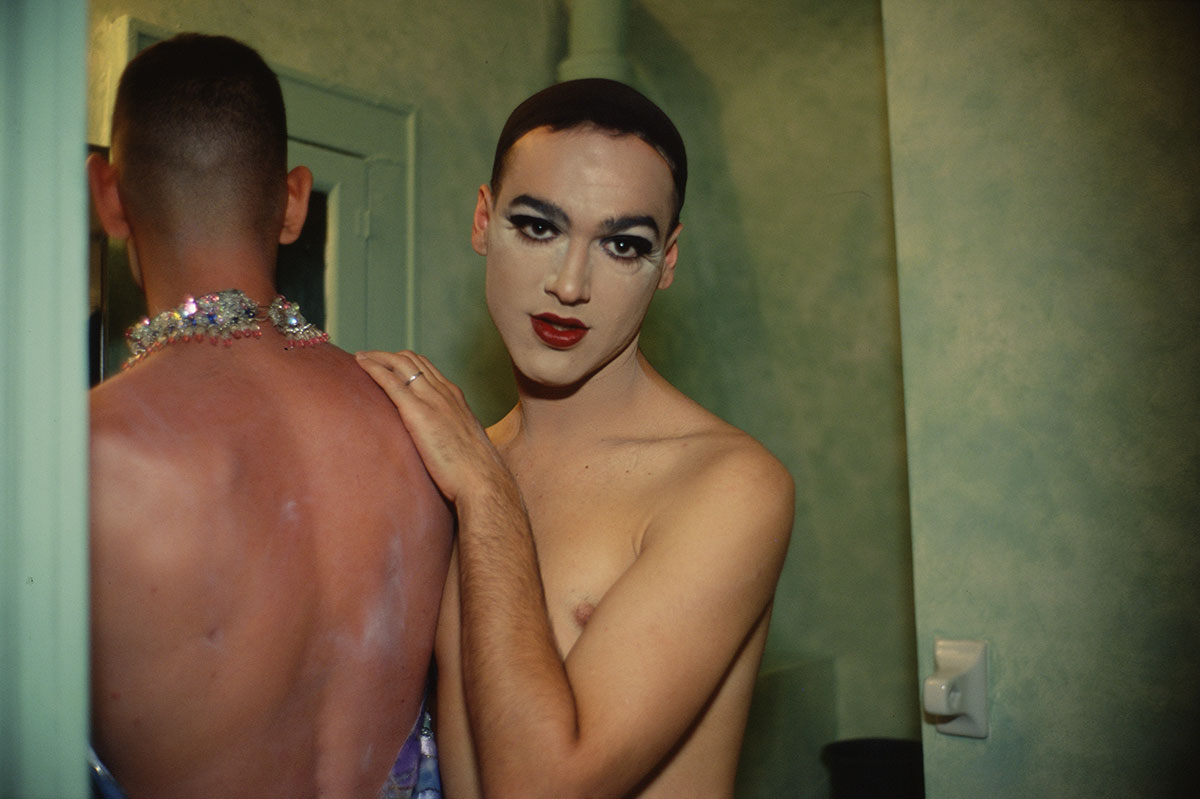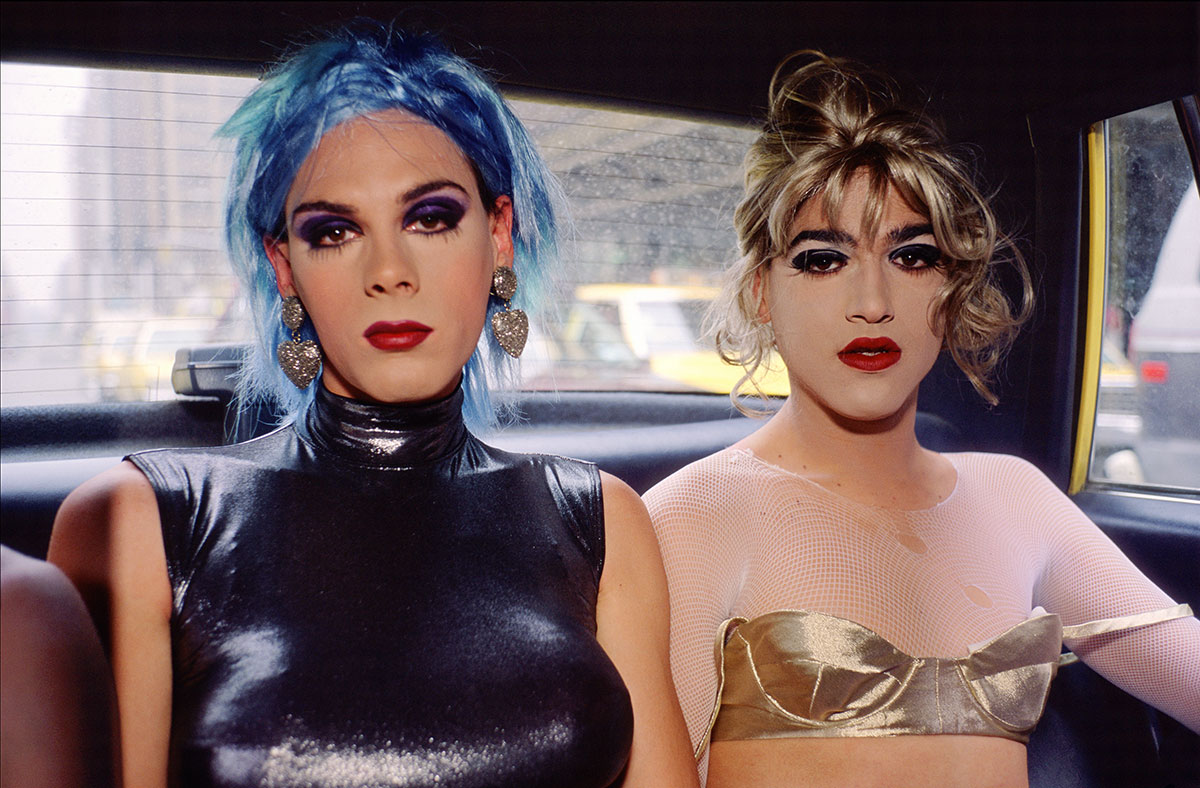PHOTO: Nan Goldin-This Will Not End Well
 Nan Goldin is one of the most high-profile artists of our time. Her work’s exploration of the human experience is legendary and has profoundly influenced subsequent generations. Her first work, The Ballad of Sexual Dependency, documents life in Provincetown, New York, Berlin and London beginning in the 1970s and 80s and up to the present day. Goldin photographed the world of her inner circle of creative, bohemian friends with raw tenderness. Her photographs give us snapshots of intimacy and coupling, the quotidian and wild parties, and the struggle between autonomy and dependency.
Nan Goldin is one of the most high-profile artists of our time. Her work’s exploration of the human experience is legendary and has profoundly influenced subsequent generations. Her first work, The Ballad of Sexual Dependency, documents life in Provincetown, New York, Berlin and London beginning in the 1970s and 80s and up to the present day. Goldin photographed the world of her inner circle of creative, bohemian friends with raw tenderness. Her photographs give us snapshots of intimacy and coupling, the quotidian and wild parties, and the struggle between autonomy and dependency.
By Dimitris Lempesis
Photo: Stedelijk Museum Archive
The retrospective “This Will Not End Well” is the first exhibition to present a comprehensive overview of Nan Goldin’s work as a filmmaker. The exhibition is installed in six unique buildings designed by Hala Wardé, an architect who frequently works with Goldin. Each building is designed in response to the specific piece. Together they constitute a village. The exhibition is comprised of: “The Ballad of Sexual Dependency” (1981–2022), Nan Goldin’s magnum opus; “The Other Side” (1992– 2021), a historical portrait produced as an homage to her trans friends whom she photographed between 1972–2010; “Sisters, Saints and Sibyls” (2004–2022), a testament to the trauma of families and suicide; “Fire Leap” (2010–2022), a foray into the world of children; “Sirens” (2019–2020), a trip into drug ecstasy; and “Memory Lost” (2019–2021), a claustrophobic journey through drug withdrawal. At the age of fifteen Goldin moved into a commune and attended Satya Community School in Lincoln, Massachusetts. Satya applied an alternative educational philosophy based on a school in England called Summerhill, whose unconventional methods gave students the freedom to decide whether or not to attend lessons and an equal vote on school matters. As classes were not compulsory, Goldin and her friends went to the cinema almost every day. This made a big impression on Goldin’s early creativity, and it was then that she realized she wanted to be a filmmaker. When teachers from Massachusetts Institute of Technology, MIT, were able to secure a donation of Polaroids for the school, Goldin found her voice through photography. The people she first photographed were those with whom she developed lifelong friendships. After Satya, Goldin moved in with a group of her friends who were drag queens in Boston in the early 1970s. Her photographs from that period were her first body of work and paid homage to the beauty of her friends and the life they lived together, centering around a bar called The Other Side. During this time, she decided to push her work further by going to art school, where she had her first encounter with the history of photography. While at art school she had no access to a darkroom to develop and print images, so she began working with slides to present her work. This soon developed into a practice of making slideshows. The photographs from the years with the queens in Boston were later made into a book and a slideshow work called “The Other Side” (1992–2021).
Goldin moved to New York in 1978 and began working on what was to be her first major slideshow: “The Ballad of Sexual Dependency” (1981–2022). The Ballad consists of images from Goldin’s various lives and relationships over many years, telling stories of love, intimacy, connection, beauty, pain, and loss. It essentially depicts her nonbiological family as it evolved from Satya forward. The Ballad tells of the struggle between autonomy and dependency in relationships. It is edited into chapters that range from gender identity, violence against women, parties, and gossip, to children, prostitution, and sexual relationships both violent and tender. It has become a landmark in art history, and it is hard to relate to the fact that in the 1970s and early 1980s Goldin was repeatedly told that there was no such thing as a good woman artist. The Ballad is dedicated to the many people lost to the AIDS crisis that decimated Goldin’s community. In the late 1980s Goldin turned her losses into activism, and she curated the first major show in New York about AIDS, which turned into a national controversy. Goldin’s love of slideshows is based on the medium’s conduciveness to constant reediting and updating to reflect her changing view of the world. She has never shown the same version of The Ballad twice, as it continues to evolve. The Ballad remained the focus of Goldin’s practice—and the only slideshow—until the early 1990s, when she began working on other narratives. The new works include the abovementioned works “The Other Side” and “Sisters, Saints, and Sibyls”, as well as “Fire Leap” (2010–22), a portrayal of children and all their complexities. The slideshows that she developed over the coming decades included both new images and photographs that were part of The Ballad, featuring them in different contexts. Goldin’s reuse of the same photographs in different works unleashes the potential of the individual image by suspending its singularity. While framed photographs invite closer inspection, in the slideshows the images are driven by a soundtrack, a narrative, and a rhythm, with each picture being projected for only a few seconds. The individual motifs are presented without titles, dates, geographical references, and other information. Such hallmarks that are usually associated with the photographic image are abandoned for a larger whole. In 2019 Goldin created a new major work, “Memory Lost”, that tells of the dark side of drug addiction. By immersing the viewer in the experience of withdrawal through the use of blurred images, claustrophobic rooms, and dark landscapes, it evokes a strong sense of anxiety and entrapment. For the first time Goldin invited composers to write a score. The music ranges from an emotionally charged piece commissioned from composer and instrumentalist Mica Levi to the operatic voices of Soundwalk Collective and the pure cacophony of CJ Calderwood. The soundtrack also includes archival recordings from telephone answering machines and interviews with friends who experienced drug addiction. Signs of desperation, loss, and abandonment testify to individual life as a collective experience.
While working on “Memory Lost”, Goldin created the companion piece “Sirens” (2019–20), which shows the pleasure and sensuality that drugs can induce. Sirens echoes the enchanting call of the Sirens from Greek mythology who lured sailors to their untimely deaths on rocky shores. It is the first work that Goldincreated entirely using found footage. Playfully composed of scenes taken from films by directors such as Kenneth Anger, Lynne Ramsay, and Henri-GeorgesClouzot. A central feature of Sirens is a seductive whistle composed by Mica Levi that draws the audience into the work. The meaning of sound is crucial in all of Goldin’s slideshows. The music she has chosen for “The Ballad of Sexual Dependency” adds subtext and contextual links to the point where it is inseparable from the images. The choir and Goldin’s voice in “Sisters, Saints, and Sibyls” convey and reinforce the work’s heartbreaking subject matter. The interviews and phone recordings in “Memory Lost” take us directly into the painful experience, and the soundtrack of “Fire Leap” is entirely composed of children’s voices singing songs such as “Desperado” and “Space Oddity.” As this exhibition reflects, Nan Goldin’s work has always been personal and political. Her experience of the AIDS crisis prompted Goldin to form the group P.A.I.N. (Prescription Addiction Intervention Now) in 2017, focusing on a contemporary epidemic: the overdose crisis. Since the late 1990s, the consumption of prescription opioids has skyrocketed due to aggressive and unethical marketing. These drugs, which are highly addictive and extremely risky in the event of an overdose, generate vast profits for large pharmaceutical companies that turn a blind eye to the addiction and deaths they cause. The numbers of the overdose crisis continue to rise, with over one thousand people dying in 2021. P.A.I.N.’s mission is to compel museums to acknowledge their relationship to dark money, particularly from the Sackler dynasty, which owns a large pharmaceutical company and has given huge donations to cultural institutions. In 2019, after a number of successful campaigns and significant media attention, the art world began responding to the group’s calls by turning down donations from the Sacklers and removing the donor’s name from museum walls. Goldin was also involved in a spinoff group called OxyJustice that followed the Sacklers into bankruptcy court, resulting in a settlement of six billion dollars from the Sackler’s massive fortune. Goldin continues to fight against the stigma attached to using drugs. P.A.I.N. is currently focused on supporting various organizations engaged in harm reduction to keep drug users alive. The history of photography has a long tradition of claims to objectivity and truth. Nan Goldin, however, differs from most photographers and filmmakers in her approach. Instead of being a spectator, she works from within her direct experience. Life, community, and the collective determine her work. Using multifaceted techniques such as slideshows, films, books, curation, and activism, Goldin tells stories that are not always told or heard. Her output depends on the human need to share and affirm others. Goldin’s work reflects her rare ability to remain curious, listen, and participate—over fifty years on from when she first began inserting slides into her Kodak carousel on the Lower East Side of New York.
Photo: Nan Goldin, Teri with her dog in a taxi, New York, 1987. © Nan Goldin
Info: Curators: Fredrik Liew and Vincent van Velsen, Stedelijk Museum, Museumplein 10, Amsterdam, Netherlands, Duration: 7/10/2023-28/1/2024, Days & Hours: Daily 10:00-18:00, www.stedelijk.nl/




Right: Nan Goldin, The Hug, New York City, 1980. © Nan Goldin
